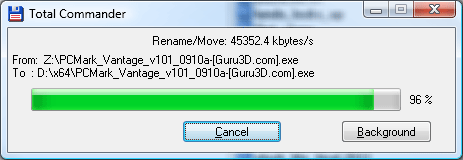HDD Performance
Performance
The configuration screenshots we have just shown you, cover like 80% of the units' capabilities and possibilities. You can understand that explaining every little detail would be a tremendous task, and also making it more difficult to understand the product. The primary features have been shown. Let's have a look at it's performance.
For our test we'll use a WD 150 GB Velociraptor, we'll test only one logical unit.
| Performance |
Read |
Write |
| USB 2.0 |
27 |
26 |
| Gigabit Ethernet |
54 |
44 |
| eSATA | 124 | 125 |
So you'll notice that running the device over USB 2.0 is seriously hindering performance. Read speeds will be roughly 27 to 28 MB/sec. Once we move to a Gigabit Ethernet connection we actually get surprisingly good performance. Transferring with high-speed files over the Ethernet is quite challenging.

We did notice a drop of in read performance with block file sizes over 32KB. Whether that is a bottleneck or related to packet-sizes or something weird we do not know. it might as well be the software benchmark suite which is not at all designed for measuring Ethernet file transfers.
Still for Ethernet file transfers this is more than sufficient. Should you wan to go for maximum performance, then just make an eSATA connection, but your device will become a Directly connected storage unit, and not Network attached which is the sole purpose of this box.
One more example:

Above we are copying some data from the NAS towards the client side PC, on an SSD, that's great performance over the Ethernet.
Noise levels
The unit as tested is not on the noisy side, in fact it is quite silent. Once the PWM fan kicks in you can hear the airflow and sure, your HDD will make the actual noise you hear. But the Promise SmartStor NS4600 is audible, though not extremely noisy or anything.
Power consumption
We placed the good old wattage meter in-between the wall power socket and the device to see how much power it actually sucks up. I mean, this is a semi-based controller slash server really.
The DAS is clever in the sense that it will automatically detect when it has been disconnected from a computer and stop the hard drives from spinning. But check it out under active conditions:
PowerIdle W
load W
1 HDD20
36
So yes, the NS4600 isn't hogging up much energy either though seems to consume slightly more current than the DS4600. For each added HDD you can add roughly 10W power consumption when the HDD is in use. So with the drive bay loacked and loaded we expect to peak at give or take 66 Watt.
